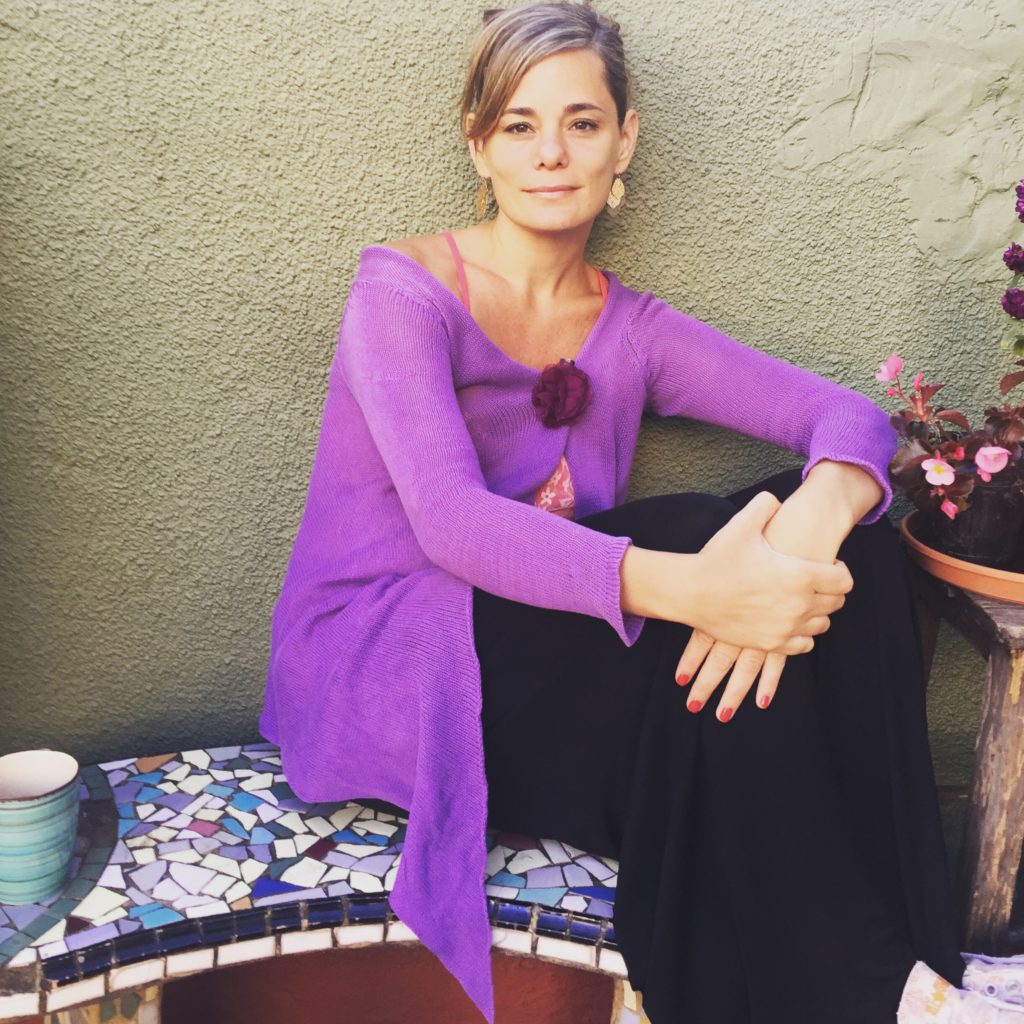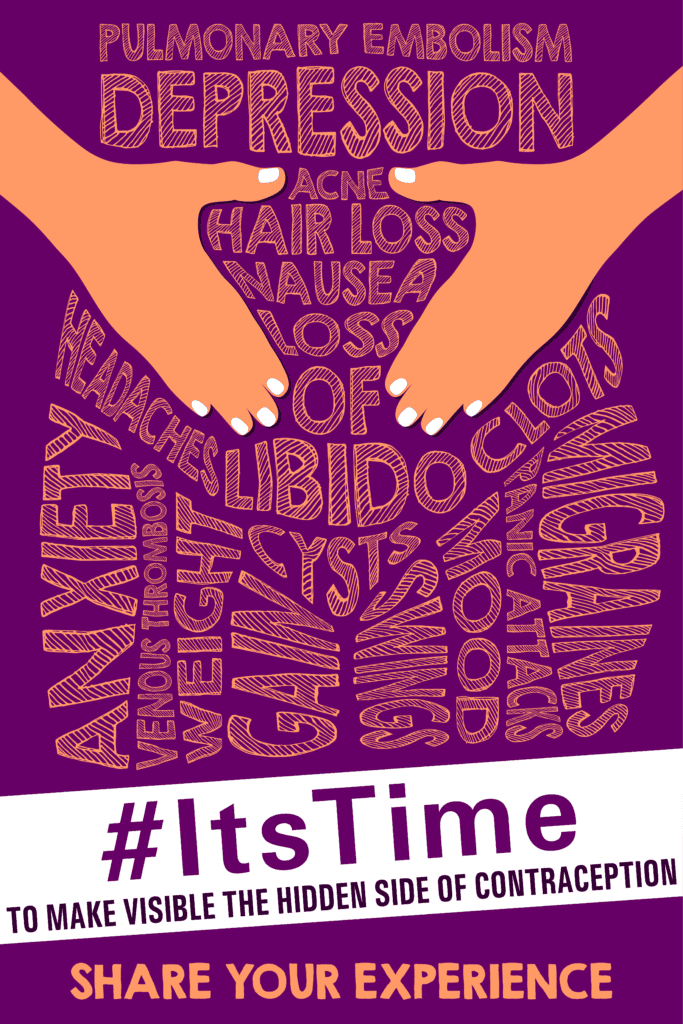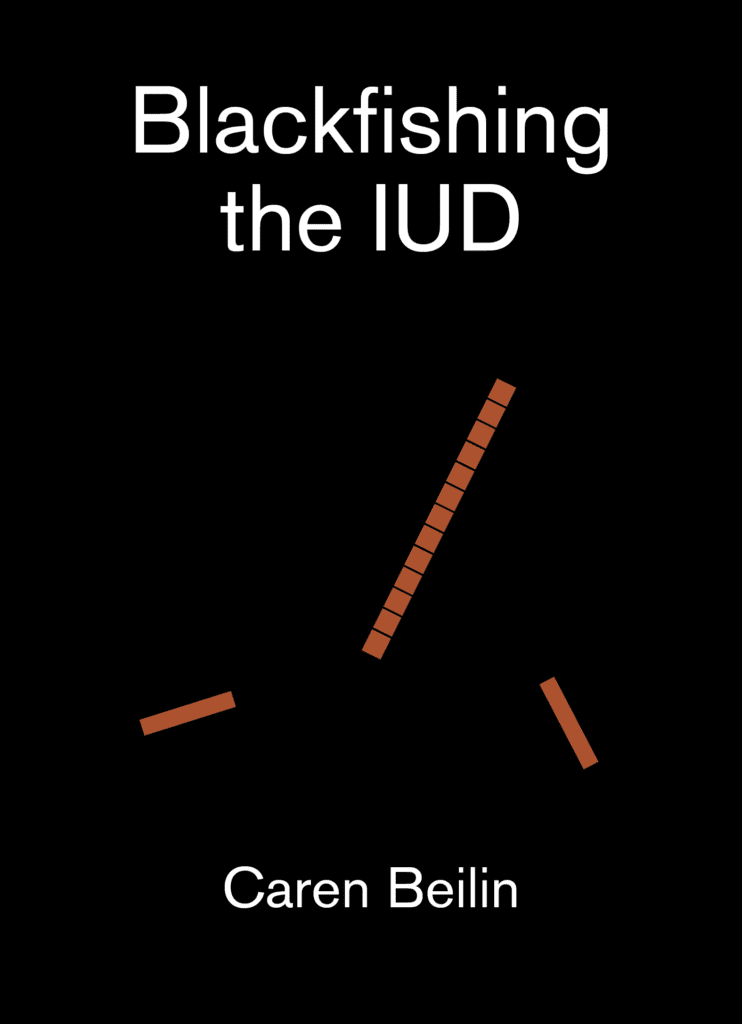Flor Kot Hansen and Caren Beilin are two women whose lives have been upended by the side effects of the copper IUD, a birth control device whose impact around the world has been enormous and has received little media attention. And they are each, in their own way, trying to do something about it.
Flor is a feminist political scientist and a former victim of the copper IUD who shares important information on the under-reported side effects of the device from her social media accounts (see below) and her blog, Cuidado con el DIU de Cobre (Beware the Copper IUD). The Argentine activist is currently working with Esperanza Project Foundation co-founder Hernán Vilchez on “When Bodies Talk,” a documentary about her journey with recovery and her work to get the word out about the problems of copper IUD toxicity.
Read this article in Spanish HERE
She recently launched a global awareness campaign to make visible the under-informed side effects of contraceptives called #ItsTime. The main goal of the campaign was to invite women from all over the world to share an informative flyer and their stories with contraceptives. The campaign reached more than 150,000 people and she received thousands of testimonies about bad experiences with contraceptives. At this moment, she is recruiting a team to start an NGO to bring the feminist revolution to the healthcare system.
Caren, for her part, authored a book about the issue called Blackfishing the IUD, a collaboratively written memoir about reproductive health and the IUD, gendered medical gaslighting and activism in the chronic illness community. She considers the copper IUD to be responsible for triggering her sudden onset of rheumatoid arthritis. Both women share research and patient testimonies that suggest the copper IUD is actually sickening quite a lot of women in a few different ways.
Caren recently interviewed Flor for the Blackfishing the IUD podcast featuring authors and activists and patients who have been deeply affected by the IUD or by gendered medical gaslighting in general. Here we share an edited transcript.
Caren: Hello Flor! Thank you so much for taking this call and being on this podcast. I’m really, really excited to just get to say hello to you.
Flor: Thank you, Caren, for inviting me. I am also very excited and open to answer all your questions.
Caren: Oh, good. OK, well, I guess we will just start in a sort of basic way, just thinking about what you’re doing and what we’re all doing here. I’m familiar with you first and foremost, because during my own health crisis with the IUD, I turned first to Copper IUD Detox, and that is where I started getting a lot of answers and a lot of support and a lot of information about healing. And it was such an important thing for me to find. So I wonder if you can talk a little bit about what Copper IUD Detox is and why you founded it?
Flor: Well, Copper IUD Detox is a Yahoo group that I started when I discovered the evils of the copper IUD around 2013. I started with a group because I felt so lonely with this, because no doctor seemed to support me, and there was a huge community that spoke English that I’ve found on the Internet on forums. And I thought it would be a nice place for women to share their experiences. Also, since there was so little information about how to heal, how to detox.
I became aware of copper toxicity in 2012 after suffering a huge deal. I had the copper IUD for a year and a half and I looked for information in Spanish first on the Internet, because I suspected that it could be my birth control, but I found nothing. So I continued suffering. And then one day I said, “I should look for information in English.” And then I stumbled upon thousands of cases of women suffering the same thing: From one day to the other they started feeling bad and they didn’t understand what was going on with them. And the first forum that I found was in Mothering magazine: hundreds of cases of women suffering the same. So that’s when I decided to remove the IUD, and then I created the group.
And then I invited women from that forum, and other forums that I found to join it. And it was of great help because I didn’t have any support from physicians or my husband or my family and finding women that could understand what was going on with me. And they were experiencing the same thing, which was of great support.

Caren: So there’s one woman who is in this group and her narrative is really extreme. And she thought about donating it to be part of the book. For a while she wasn’t sure how she felt about it and ultimately decided, “OK, I’m going to do it.” And I’m so excited because one of her fallouts was that her partner left her because he just thought he didn’t believe her. He said “No, you must be making this up.” And she said, “I’m going to send him a copy of this book.”
Flor: Of course, it’s very complicated because we live in an era when science is very important. So if there isn’t any scientific confirmation. It’s very difficult that we find understanding from the public. But there are many I found in my research this last six years, a lot of research talking about copper toxicity, and they are naming the IUD as a source of copper toxicity. But there is little access to that information. That’s why I continue my struggle providing women access to this information, because I think that there is an interest in the market for people, that they don’t know these bad experiences we are having. The Copper IUD is a more complex case because they sell it as it has nothing bad, no hormones. So it’s more complicated to prove that copper can generate all those symptoms that we suffer.
Caren: So maybe let’s talk a little bit about that, because you’re a very passionate compiler of research and you’re very specifically thinking about copper toxicity. So since you are such a compiler of this research, what are some things that you can tell our listeners here about copper toxicity?
Flor: Well, one thing that’s very important is, for example, your case that you had it only for six days. Can you suffer from copper toxicity in six days? Yes, you can. Why? Because one of the researchers I found in Argentina, they were studying the burst release, which is the first release of copper in our bodies. They say that when they put in the copper IUD, there are some IUDs that release a lot of copper the first couple of days. So that could explain why you suffered in such a short time from these symptoms. And it was very difficult because they say the same wire of copper has different charges on it. So it’s very difficult to control how much copper is released into the body. So I believe that this could be a way to understand why there are women that suffer from copper toxicity and others that don’t suffer.
Caren: So I wonder if you could actually just take a moment and share a little bit about what your story was with getting it and what kinds of things happened with you?
Flor: It was very, very painful. Well, I had the copper IUD after I gave birth to my second child, Vicente. For the first six months it was OK, just like heavy bleeding and some cramping during the menstruation, but nothing else. But then I started feeling some anguish and anxiety that I attributed to losing a friend to cancer.

But then I was on my vacation, on my holidays with my husband and family and all the rest in my family was OK: I had a good moment at work, I was having a good moment in my relationship. But I had this sensation in my stomach that I couldn’t I couldn’t eat, I lost my appetite and I wanted to cry all the time. I didn’t understand what was going on with me, and that was giving me a lot of anxiety, because I didn’t have any reason to feel that. That was around eight months of the copper IUD.
And I remember telling a friend that I had repetitive dreams of going bald because I was losing my hair, too. I remember thinking about the iud. That’s why I did a hormonal check and everything came out fine. So I said, I need to go to a psychiatrist because I can’t find any explanation. I was starting to feel unable to go to work, and it was affecting me a lot in my mood. So I went to a psychiatrist, who gave me antidepressants and they helped me for a while. But that sensation in my stomach didn’t go away. And it came a lot when I was ovulating. And then I started looking for answers on the Internet in English, and then I read all the stories so similar to mine and I said “It’s the copper IUD!” I had no doubt.
I read about copper toxicity in some pages and it was all the things that I was experiencing: anxiety, panic attacks, depression, insomnia, acne, hair loss, joint pain. I had all those symptoms. When I went to the doctor for removal, I asked him if it could be the IUD and he said it’s impossible. “And I said, well, OK, remove it.” And I left the office and then, well, I started this path of trying to get better.
I was very insecure. At first, my husband didn’t believe in me, my doctors didn’t believe in me. I couldn’t tell my friends in a way they could support me. So I felt very lonely. The only support that I found was in this group that grew very quickly in 2012, and there were no Facebook groups. This Yahoo group was a great tool for all of us.
Caren: Yeah, I needed it because I’m not on Facebook. It was very helpful for that reason too.
Flor: But now there are so many groups. There are thousands of victims all over the world. I speak Spanish and French, and I speak some Portuguese. And so I have access to a lot of groups and I read a lot of what is going on with women. And I am so happy, Caren, that you are joining me in this crusade, because the more voices, the more women that are spreading the word, the better we will get there.

When we began working on this podcast, we set up a hotline and asked people to call in and leave messages with their experiences in the doctor’s office. So we’ll take a quick break and listen to a doctor’s note.
Hi, I had an IUD for about three months, a little more. I have generally avoided going to doctors’ offices in my adut life because mainly because when I was a child, I didn’t have insurance. We didn’t have good insurance at a different point. And so it was always a source of anxiety for me. But I did end up getting an IUD when I was in graduate school because I had to get insurance and they covered it. It was actually really easy, my friend told me, just for the IUD. I was in and out of the hospital for like 20 minutes and 12 hours later and I was out with my friends. So it seemed like a shortcut form of birth control that everyone thought it would be.
But then about three months later, I moved across the country and I started having severe pain. I felt like somebody had put a staple inside of me and it was like tugging in different directions and it just got worse and worse. And I also started to have a lot of really heavy bleeding. And because I had moved and my insurance was kind of complicated and so I couldn’t really get in to see a doctor.
And I basically ended up going to the E.R. one morning and they weren’t able to remove it because they didn’t have a gynecologist in the hospital. So for medical reasons, I guess they couldn’t remove it, and they made me stay there and take these tests. And my doctor sat down with me and said, “You know, you’re risking your fertility and you may never be able to have a baby if you don’t do all these tests.” It was very focused on my potential fertility. He said to me that his wife had an IUD and that she said it was really great and that I should give it more of a chance. He said “You know, I really understand why you’re so upset. You know, you’re trying to do a nice thing for your partner. And then it turns out that it’s causing you a lot of pain. But if you just stick with it, it’ll get better.”
It felt uncomfortable to me. He was about to do a public exam and I had to abandon myself to an internal ultrasound, which was incredibly painful and invasive. And I left the hospital 12 hours later, that’s how long it took me to do all these tests. And they didn’t find anything. So the doctor just said, you know, take some ibuprofen and rest up. And in the meantime, it was totally debilitating. You know, I had to take off work. And so I ended up getting into a Planned Parenthood.
I talked to the doctor there and I told her what’s going on. And she said it was really normal to have that kind of pain. And she said, “You know, it’s really important for you to stick with a form of birth control because you may not be able to get another if you remove it, like insurance won’t cover another IUD if you want another one. So is there anything that I could possibly do that would convince you to stick with this?”
And I said to her I really needed to have it out. And so she took it out. And about six hours later, I had no pain anymore. And the bleeding stopped and slowly my cycles started to return to normal. It took a while, you know, besides the fact that I spent a year reading and worrying about the problem, it caused a tremendous amount of that in my life. I think it’s a really important conversation to be had because nobody that I spoke to had any information for me about why I might be experiencing pain or discomfort in different ways than other people. And I felt like the attitude that I got was more than if my body couldn’t conform to having this object there, that there was something wrong with my body.

Caren: And now back to my conversation with Flor. You know, my story sort of feels like an extreme one — after six days only, my whole body was humming with copper. It was like smoking out of me, I stank of copper. I was obviously getting so poisoned by it and then just got it out in this very emergency manner. And some of my symptoms were psychological anxiety, panic, heart palpitations, things like that.
But then the month that I had it taken out, I started experiencing really severe joint pain, which ultimately led to a diagnosis of rheumatoid arthritis. So I would have just really benefited from awareness and a warning that if you have auto immunity in your family, you might not want the IUD. I mean, I personally think that there are many other reasons not to want the IUD. We just have such a leap to make because for a long time this was the big feminist movement to get on birth control.
Flor: For me it was like the second most important challenge in this path. First was to make my people understand what went wrong with me and for them to believe the research I was doing. And then talking with my feminist friends and convincing them that it’s something we need to review. It’s quite normal now that we know the hormonal contraceptives can produce symptoms in the brain. But we need to make available information about the copper IUD for people to know all the symptoms that you can have in your emotions. I’m a feminist. I support the use of contraceptives, but we need to have access to all the information. The FDA is not independent anymore. For example, in the US, we know that people from the authorities in the FDA, they work in pharmaceutical companies and vice versa. So we need to have institutions that are really independent and can do very serious research because we are putting in our bodies things that we don’t know the real side effects it produces.
Caren: It’s funny to me how obvious it almost is, like what do I think that copper would do inside of a wet space? It would rust! like that’s what it would do. But there is something about the cultural excitement and normalization around this device that just didn’t allow me to see it as anything but like a feminist good thing in my life.
Flor: Yeah. And I think it’s more perverse with this birth control, because all the consumers of these devices, we are women that we don’t have a good tolerance to hormones. So we choose this copper IUD because it’s hormone-free and then we fall into the trap. But the copper has an impact on hormones. And it’s so unfair because the copper IUD is used a lot for women that have just given birth.
So it’s a scenario where women have their first baby or second baby and they’re also dealing with all these complex symptoms, emotional symptoms that are so destabilizing. I think it’s so unfair that a lot of women make the connection and then bring their connection to their doctors and the doctors they deny, they say that it’s impossible. So there is also what is going on with medicine now with the doctors, it’s such an unfair relationship between doctors and patients because it’s so vertical. They don’t leave room for doubt.
And for instance, I found that in Mexico they are putting in the copper IUD without telling them after they give birth in the clinic. There are some cases — I saw a report from a journalist, from women that they didn’t even know that they put in the copper IUD. Some countries are having really aggressive contraceptive policies. And here in Argentina, for instance, now, they bought a lot of implants, this implant that they put in your arm. So they put the implant, the hormonal implant without telling them the side effects that it could have and you can’t remove it on your own. So it’s kind of perverse. That’s why my documentary is called When Bodies Talk, because it’s very important to listen when our bodies talk. We can’t keep silencing them, that’s part of our reproductive and sexual rights. So we need to make this right available because they’re not putting all the information about contraceptives.
Caren: Thank you so much for being part of this podcast.
Flor: My pleasure. And good luck to you on your book and the podcast.
Links to Flor’s social networks
Blog: https://cuidadoconeldiudecobre.wordpress.com/
FB page: https://www.facebook.com/cuidadoconeldiu/
FB group: https://www.facebook.com/groups/1095060783857158/?ref=bookmarks
Twitter: https://twitter.com/ciudadoconeldiu
Instagram: https://www.instagram.com/cuidadoconeldiu/
Youtube channel: https://youtu.be/MdTuOq0bar4
Yahoo Group: https://groups.yahoo.com/neo/groups/copperiuddetox/info
Patreon Page: http://www.patreon.com/whenbodiestalk
Important Research in the field:
Rheumatoid arthritis activity and severity in relation to commonly used contraceptive methods in a cohort of Egyptian female patients, 2017. Two hundred female rheumatoid arthritis patients were enrolled and divided into two groups; non-contraception users (50 patients) and contraception users (150 patients). The latter group was further subdivided according to the method of contraceptive method used into: 89 intrauterine device (IUD)-users; 45 combined oral contraceptives (COC)-users; 16 injectables-users. // Hala Lotfy Fayed, Alainy School of Medicine, Cairo University, Egypt.
University of La Plata (Argentina) 2010: Argentine researcher, in her doctoral thesis, argues that copper IUD users are potential victims of copper toxicity. // Nathalie Arnal // Tesis doctoral de investigadora del Conicet que dice que las usuarias del DIU son potenciales víctimas de la sobrecarga de cobre en el organismo lo que produce estrés oxidativo.
Catholic University of Chile, Chemistry Department (Chile) 2003: Verónica Arancibia. Characterization of copper in uterine fluids of patients who use the copper T-380A intrauterine device. Research that finds out a higher level of copper in the uterine fluid in IUD users compared to non-users. // Estudio realizado en 2003 por la UCA Chile donde sostienen que la cantidad de cobre en el fluido uterino de las portadoras del diu es mucho más elevada comparado con las que no usan.
UNAM (México) 2005: Blood copper levels in Mexican users of the T380A IUD. Research that found that the level of copper in blood of IUD users was 100% higher that non-users. It recommends further studies. // Es una investigación mexicana del 2005 (UNAM) que estudió la cantidad de cobre en sangre en usuarias del DIU y encontró que era 100% más elevado que la media de las NO portadoras de DIU
Caren Beilin Contraception Feminism Flor Kot Health IUD Medical Gaslighting women
I had an IUD called Dalkon Shield in the 1970’s when I was in college. After it was inserted, I bled so much that my dorm mates joked about me using a mattress for a tampon. A couple of years later I had a severe infection (pelvic inflammatory disease). I had pus pouring out of me and a fever, so I had to be hospitalized for several days. That same week, the first case of a woman with a Dalkon shield had died. When it was safe to remove it, it was removed in the hospital. I eventually found out that the scar tissue from that infection caused me to be infertile. I found a lawyer who helped me sue the company that made the dalkon shield after years of pain and suffering. Later I developed severe uterine fibroids, and I had to have a hysterectomy at the age of 41. That is a very common problem for women who have had IUDs, even after it is removed. I did adopt two children after two miscarriages. That IUD took so much from me that was so precious.
Thank you for your comment, Claire. I’m so sorry you had to endure all of this. Your courage in sharing your experiences in this way, along with others, is making a difference.